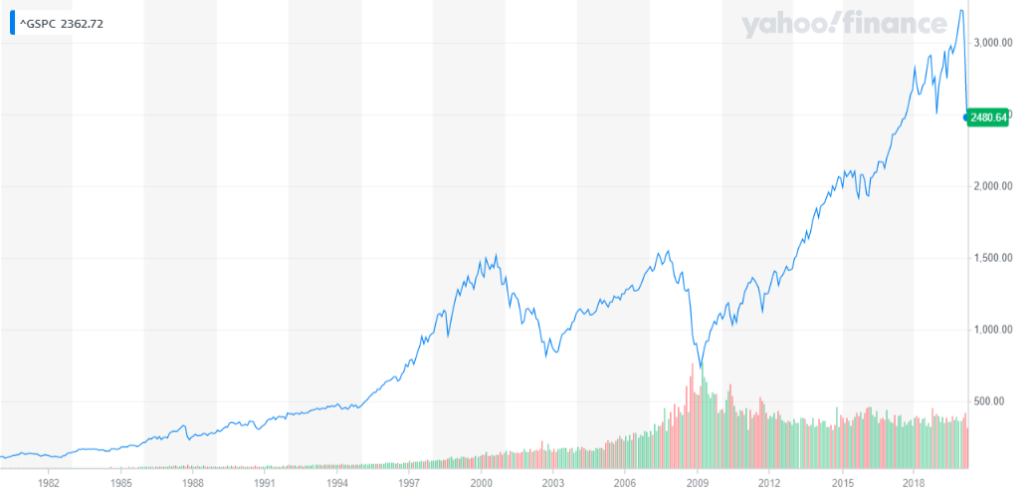SECURE Act Proposed Regulations Impact 10 Year Distribution Rule Bigly!
One of the biggest changes made by the SECURE Act was the imposition of a 10 year distribution rule for certain IRA (and other defined contribution-type retirement account) beneficiaries. This 10 year rule applies when the account owner dies after December 31, 2019. Under the new 10 year rule, most non-spouse beneficiaries must withdraw the entire balance of an inherited retirement account within 10 years of the year of the account owner’s death.
(If the account owner died before January 1, 2020, the old lifetime distribution rules still apply and allow a beneficiary to take distributions from an inherited IRA over the beneficiary’s remaining life expectancy.)
The 10 year rule itself seems straightforward. When the rule was enacted, commentators and practitioners (myself included) believed that the account beneficiary had the choice to delay liquidating the balance of the inherited IRA until the end of the 10th anniversary year, or take distributions at any time during the 10 year distribution period as long as the entire account balance was distributed before the end of that 10th year.
However, the proposed regulations introduce a significant wrinkle that will impact a great number of IRA beneficiaries who are subject to the 10 year distribution rule. Under the proposed regulations, the account beneficiary must take required minimum distributions (RMDs) from the inherited IRA during the 10 year period if the account owner died on or after their required beginning date (RBD). In other words, if the account owner was subject to RMDs at the time of his death, then the designated account beneficiary must take an annual distribution from the inherited account beginning in the year following the account owner’s death. The amount of the annual RMD will be calculated using the beneficiary’s remaining life expectancy, reduced by one for each subsequent calendar year during the 10 year term, with the remaining balance withdrawn before the end of that 10th anniversary year.
If the IRA owner died before his RBD, then the account beneficiary will be subject to only the 10 year distribution rule, but not the additional RMD rules.
In sum, if the IRA owner dies before his RBD, the beneficiary has 10 years from the year of the account owner’s death to liquidate the entire balance in the inherited IRA. If the IRA owner dies after his RBD, the beneficiary likewise has 10 years from the year of the account owner’s death to liquidate the entire balance in the inherited IRA, but must also take an annual RMD from the account during the 10 year term.
Let’s look at a couple of examples:
Death before RBD: John is the 30 year old son of IRA owner William. John is the beneficiary of William’s IRA. William dies in August 2022 at the age of 55. Since William died before his RBD (April 1 following the year William would have reached age 72), John is subject to the 10 year liquidation rule and must simply withdraw the entire balance of William’s IRA before December 31, 2032, the 10th year following William’s death.
Death after RBD: In this example, IRA owner William dies in August 2022 at the age of 73. John, William’s 50 year old son is William’s beneficiary. Since William died after his RBD (April 1 of the year following the year William turned age 72), John is subject to both the 10 year liquidation rule, and the RMD rules. So beginning in 2023 John must calculate a required minimum distribution based upon his remaining life expectancy for years 1 through 9 of the 10 year term, withdrawing the entire remaining balance by the end of year 10.
But what about Roth IRA beneficiaries you ask? The proposed regulations confirm that all Roth IRA owners are deemed to have died before their required beginning date (because Roth IRA owners are exempt from required minimum distribution rules). Therefore, if a Roth IRA owner dies after December 31, 2019, her account beneficiary will only be subject to the 10 year distribution rule. This will allow for an additional 10 years of tax free growth before a distribution needs to be taken.
The rules governing distributions from IRAs and other retirement accounts have always been complex. The proposed regulations if and when adopted will only add to the complexity. You should work with an qualified advisor who can help you avoid all of the potential tax traps that await the unwary.
If you are not sure how the rules may apply to your situation, give us a call, we can help.
[This article is for informational purposes only. It is not legal or tax advice, and does not create or continue an attorney-client relationship.]

